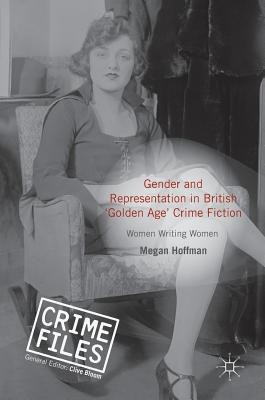
- We will send in 10–14 business days.
- Author: Megan Hoffman
- Publisher: Palgrave Macmillan
- ISBN-10: 1137536659
- ISBN-13: 9781137536655
- Format: 15.2 x 21.3 x 1.8 cm, kieti viršeliai
- Language: English
- SAVE -10% with code: EXTRA
Gender and Representation in British 'Golden Age' Crime Fiction (e-book) (used book) | bookbook.eu
Reviews
Description
This book provides an original and compelling analysis of the ways in which British women's golden age crime narratives negotiate the conflicting social and cultural forces that influenced depictions of gender in popular culture in the 1920s until the late 1940s. The book explores a wide variety of texts produced both by writers who have been the focus of a relatively large amount of critical attention, such as Agatha Christie, Dorothy L. Sayers and Margery Allingham, but also those who have received comparatively little, such as Christianna Brand, Ngaio Marsh, Gladys Mitchell, Josephine Tey and Patricia Wentworth. Through its original readings, this book explores the ambivalent nature of modes of femininity depicted in golden age crime fiction, and shows that seemingly conservative resolutions are often attempts to provide a 'modern-yet-safe' solution to the conflicts raised in the texts.
EXTRA 10 % discount with code: EXTRA
The promotion ends in 21d.19:38:38
The discount code is valid when purchasing from 10 €. Discounts do not stack.
- Author: Megan Hoffman
- Publisher: Palgrave Macmillan
- ISBN-10: 1137536659
- ISBN-13: 9781137536655
- Format: 15.2 x 21.3 x 1.8 cm, kieti viršeliai
- Language: English English
This book provides an original and compelling analysis of the ways in which British women's golden age crime narratives negotiate the conflicting social and cultural forces that influenced depictions of gender in popular culture in the 1920s until the late 1940s. The book explores a wide variety of texts produced both by writers who have been the focus of a relatively large amount of critical attention, such as Agatha Christie, Dorothy L. Sayers and Margery Allingham, but also those who have received comparatively little, such as Christianna Brand, Ngaio Marsh, Gladys Mitchell, Josephine Tey and Patricia Wentworth. Through its original readings, this book explores the ambivalent nature of modes of femininity depicted in golden age crime fiction, and shows that seemingly conservative resolutions are often attempts to provide a 'modern-yet-safe' solution to the conflicts raised in the texts.


Reviews